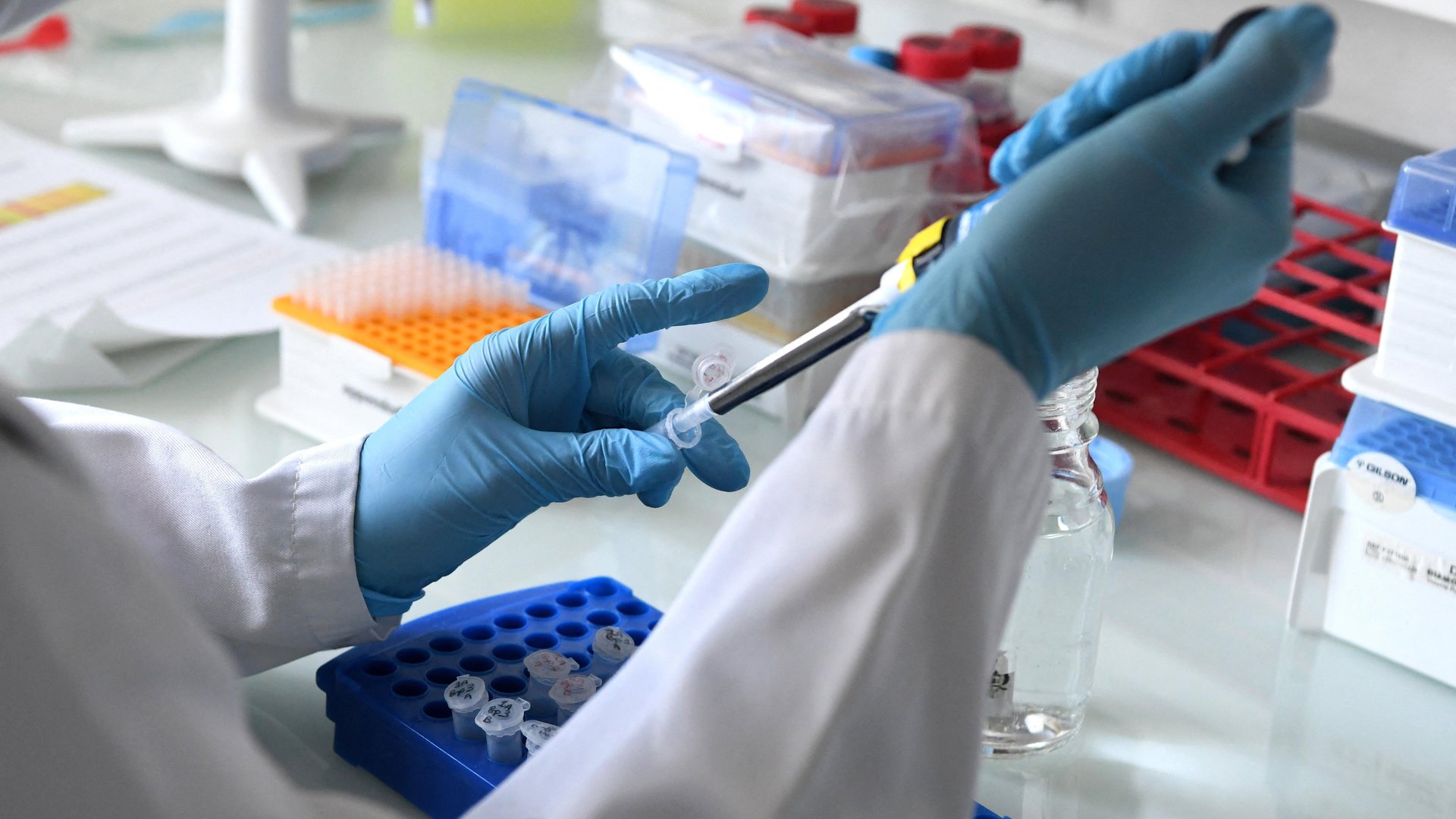A hemophilia drug that just won FDA approval pegs a one-time $3.5 million vial against several millions in lifelong costs
The most expensive drugs in the US are gene therapy ones that alter DNA to cure disease

There’s a new one-time treatment for Hemophilia B patients in the market, but it comes with an obscene price tag.
Suggested Reading
Hemophilia B patients have a rare genetic bleeding disorder in which people do not produce a protein needed to create blood clots. It is typically controlled by recurring prophylaxis therapy, where clotting factors are introduced via intravenous infusions. And even with these regular IV interventions, patients can face spontaneous bleeding and severe joint pain.
Gene therapy drug Hemgenix could change that. Its manufacturer, CSL Behring, touted the approval as “historic,” explaining that it “reduces the rate of annual bleeds, reduces or eliminates the need for prophylactic therapy and generates elevated and sustained factor IX levels for years after a one-time infusion.”
What’s not a boon, though, is its price. CSL Behring plans to charge an eye-popping $3.5 million for the single-use 10ml vial, making it the most expensive drug in the world.
However, when stacked up against the possible benefits, including eliminating the lifelong cost of managing Hemophilia B, the price tag seems less exorbitant. “We are confident this price point will generate significant cost savings for the overall healthcare system and significantly lower the economic burden of hemophilia B,” the company said, according to Reuters.
Quotable: Hemgenix is a game-changer for Hemophilia B patients
“Gene therapy for hemophilia has been on the horizon for more than two decades. Despite advancements in the treatment of hemophilia, the prevention and treatment of bleeding episodes can adversely impact individuals’ quality of life. Today’s approval provides a new treatment option for patients with Hemophilia B and represents important progress in the development of innovative therapies for those experiencing a high burden of disease associated with this form of hemophilia.” —Peter Marks, director of the FDA’s Center for Biologics Evaluation and Research
Hemgenix, by the digits
1 in 40,000: People with Hemophilia B, most of whom are men
Upwards of $20 million: Lifetime costs of hemophilia B management
$2.93 million to $2.96 million: Fair price for Hemgenix, suggested by the Institute for Clinical and Economic Review
94%: Patients who discontinued factor IX prophylaxis and remained prophylaxis-free in CSL’s studies
≥5%: Trial patients experienced some common side effects including liver enzyme elevations, headache, elevated levels of a certain blood enzyme, flu-like symptoms, infusion-related reactions, fatigue, nausea and feeling unwell.
Drugs of interest: Zolgensma, Zynteglo, Skysona
Hemgenix is not the only drug with a seven-figure price tag. Others include:
- Zolgensma, priced at $2.1 million, is used to treat children below the age of 2 with spinal muscular atrophy.
- Zynteglo, which costs $2.8 million, is meant to treat beta-thalassemia, a rare disease with patients often requiring life-long blood transfusions
- Skysona, a drug for a rare neurological disorder that’s manufactured by the same company that made Zynteglo, bluebird, costs $3 million
The common factor in all these drugs is that they’re all new and novel life-changing gene therapies, which work by altering genetic material in order to treat a disease.
Will insurance cover gene therapy?
So far, insurers have mostly relied on stop-loss policies, intended to protect against catastrophic or unpredictable losses, to cover gene therapy. But as more drugs are introduced in this realm—in mid-2022, more than 2,000 gene therapies were in development worldwide targeting dozens of therapeutic areas, including cancer, neurological, blood, immunological, cardiovascular and infectious diseases—they’ll need to come up with a better plan.
“As the market for gene therapies grows, additional challenges related to therapy administration and complex supply chain management will also need to be addressed,” pharmacy benefits manager Optum warns. “Since these therapies have been approved based on clinical trials with very small population sizes and without long-term data, plan sponsors will need help ensuring the right patient receives the right treatment and that the benefits will persist over a significant period of time.”
It’s a complicated problem to solve. The high-cost therapies put a big one-time burden on one insurer in one city—all at once, writes Phillip Barker, managing director of the healthcare practice at reinsurance company Guy Carpenter.
Barker says some of the burden can be alleviated by manufacturers working with payers, like when Spark offered outcome-based rebates for its hereditary blindness treatment, or by getting reinsurers onboard to help manage risk and handle volatility. But there’s not much precedent for how these contracts would work, so it’ll take some trial-and-error to get them into shape.
Related stories
🧠 A biotech startup thinks its idea could cure dementia—but scientists have their doubts